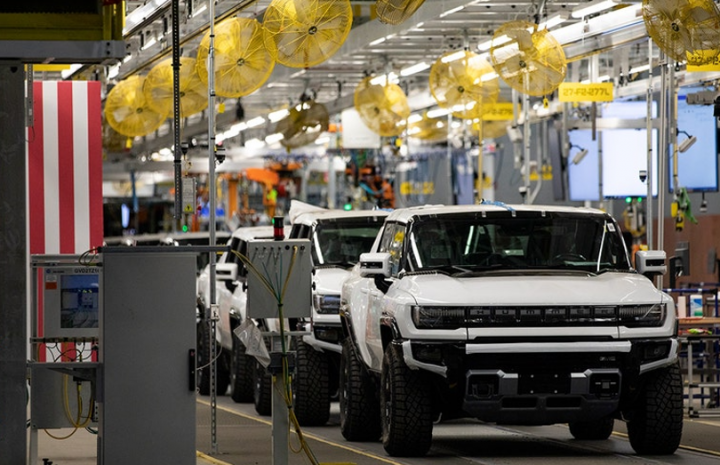Recently, GM announced raising prices on vehicles across the board for 2024. This increase comes on the heels of a new UAW contract, which could be the reason.
Why are vehicle prices going up? Point anywhere you want, and you’ll find reasons for price increases. Whether it’s increased costs of materials, the complexity of new vehicles, especially EVs, or corporate greed, the price of new vehicles is going up. GM announced its intention to raise prices across the board, but they aren’t the only automaker pushing prices up to higher levels in the new year.
Did you think the new UAW contract costs would come out of profits?
The Detroit Big Three have been in the automotive market for more than a century. Sure, Stellantis has operated under several different names, especially in recent years, but we can recognize the longevity of the brands under the Stellantis umbrella. The UAW recently won a massive new contract for unionized autoworkers in North America. If you thought the cost of this new contract would come directly out of the record profits reported by these three automakers, you’re fooling yourself. Those costs will be passed on to consumers in the form of increased vehicle prices.
GM is raising prices per vehicle by approximately $500 per vehicle in 2024. This is extremely close to the added cost of the new labor contract, which is estimated to cost GM an additional $9.3 billion. This cost would translate to an overall increase of $575 per vehicle sold during the contract term. This means we could see additional increases in vehicle prices in future years. This new UAW contract runs from April 2024 to April 2028, which makes us wonder what the union has in mind for the next round of negotiations.
How profitable was GM last year?
You might think an automaker that has an income of more than $156 billion annually could suck up an additional $9.3 billion in added labor costs. After expenses, when we get to the bottom line of profits, GM reported $21,831 billion last year. Although GM could absorb the added cost of this new UAW contract, that would cut the overall profits in half. These profits help ensure the company can continue to develop new products and absorb the cost of certain failures, which have happened and could occur with some of the electric vehicles heading to the market.
Of course, when you realize the $9.3 billion increased labor cost is over the course of the four-year contract, you might feel differently. These increases are expected to occur using the following schedule:
- $1.5 billion in 2024
- $1.8 billion in 2025
- $2.1 billion in 2026
- $2.5 billion in 2027
- $1.1 billion from January-April 2028
Over the past few years, GM’s profits have increased year-over-year. Couldn’t this massive company absorb the costs each year and avoid increasing costs to the consumer? Unfortunately, that’s not how many large companies operate, which we can see with GM raising prices on every vehicle.
GM isn’t the only company increasing prices
If it sounds like this is a smear article against GM, it’s not. Ford also announced price increases on all vehicles, and Ford’s increases are greater than GM’s. Most Ford shoppers will likely see an increased cost of each vehicle between $850 and $900. Its pretty easy to look at these increases and understand this is the impact of the new UAW contract on the public.
So far, Stellantis hasn’t announced vehicle price increases, but we can expect Chrysler’s parent company to follow the same path as its cross-town rivals.
Should we believe the C-Suite?
GM and Ford have been quoted with statements that should make consumers feel good that the company is looking for ways to tighten their proverbial belts and offset the costs of the new labor agreement without increasing prices, but that’s not the case.
GM’s CEO, Mary Barra, was quoted by CNBC as saying that the company is finalizing a budget for next year that will “fully offset the incremental costs of our new labor agreements.” Additionally, Ford CFO Jon Lawler reported the company is working to “find productivity and efficiencies and cost reductions throughout the company” to offset the added costs of the new UAWD agreement.
These two company leaders might be more believable if they hadn’t already announced price increases on all vehicles. GM is already raising prices, and Ford intends to do the same. The cost of the new UAW labor agreement is passed directly to the consumer; did you expect anything else?
This post may contain affiliate links. Meaning a commission is given should you decide to make a purchase through these links, at no cost to you. All products shown are researched and tested to give an accurate review for you.

